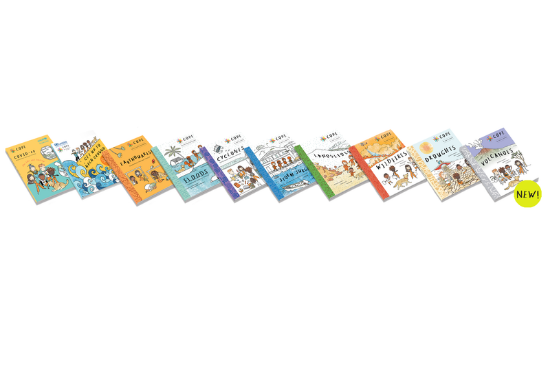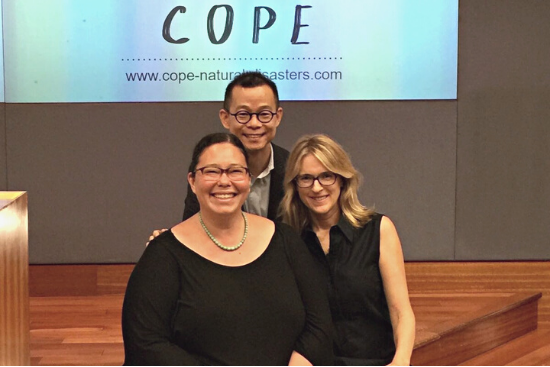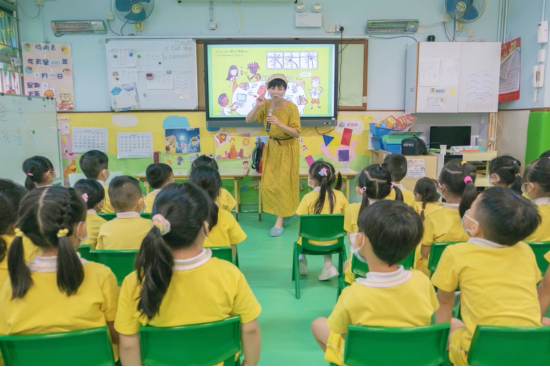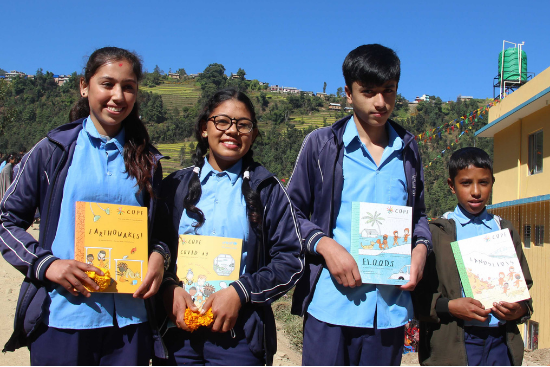When disaster strikes, how do children play a vital role in strengthening community resilience? In a bid to empower and increase disaster resilience of children, SUSS Associate Professor and Global Disaster Risk Reduction Expert, Dr Timothy Sim, together with his partners, international author, Martha Keswick, and illustrator Mariko Jesse, developed a series of books called COPE.

The current series of the COPE books.
COPE is a series of illustrated, not-for-profit storybooks created in 2015, covering topics such as natural hazards, ranging from floods to earthquakes, wildfires to cyclones, and providing coping tools, preparedness and relatable stories in an imaginative way that is easy to understand. We spoke with Dr Sim to find out more about the books.

The team behind COPE.
(clockwise) SUSS Associate Professor and Global Disaster Risk Reduction Expert Dr Timothy Sim; international author, Martha Keswick, and illustrator Mariko Jesse.
SUSS: What motivated and inspired you to start this project?
Dr Sim: COPE was motivated because, as we looked around the world, there were hardly any readable and reasonably attractive reading and educational materials for children to increase their disaster resilience, as some would consider them to be one of the vulnerable groups in disasters. We also embraced the United Nations Office for Disaster Risk Reduction (UNDRR) belief that children could champion in promoting community resilience.
SUSS: What were the biggest achievements since publishing these books?
Dr Sim: Creating the books has been a huge success. COPE is now a global Disaster Risk Reduction brand with key messages that Disaster Risk Reduction (DRR) experts have vetted. Our content has reached more than 3 million children worldwide. The series has been translated into 12 languages and distributed in 25 countries to disseminate where it was needed successfully.
Another significant achievement is our partnerships: COPE has collaborated with some fantastic global organisations such as UNICEF, the World Meteorological Organisation, UNDRR, World Vision, Oxford University, James Cook University, Hong Kong Jockey Club Disaster Preparedness and Response Institute (HKJCDPRI), and the list goes on. These partners created and distributed content, and used it in DRR education projects on the ground, schools and clubs across the world.
 A reading session of the COPE books by the Hong Kong Jockey Club Disaster Preparedness and Response Institute (HKJCDPRI).
A reading session of the COPE books by the Hong Kong Jockey Club Disaster Preparedness and Response Institute (HKJCDPRI).

United Nations Major Group for Children and Youth (UNMGCY) sharing COPE’s books in Nepal.
This year, COPE secured a partnership with UNICEF’s Learning Passport, which is an excellent opportunity to continue distributing the books to more communities and increase disaster resilience in children wherever they are.
SUSS: What are the future plans for COPE?
Dr Sim: As the world’s temperature becomes more extreme and natural hazards caused by climate change are intensifying, there is an increased need for children to be empowered and prepared with basic training in DDR. COPE believes in free DRR education for all children and will keep spreading the word and hope to find new partners to sustain the DRR global dissemination programmes which are already in place.
In May this year, COPE will launch a new book, “Volcanoes”, during the 7th session of the Global Platform for Disaster Risk Reduction organised by the United Nations Disaster Risk Reduction and the Government of Indonesia. Since Indonesia is a volcano-prone area, we hope to reach children and more vulnerable communities there with our latest book.
We are also currently working with the City of Paris to develop the next book, and probably the last, on heatwaves.
Download and read the COPE’s books for free: www.cope-disaster-champions.com